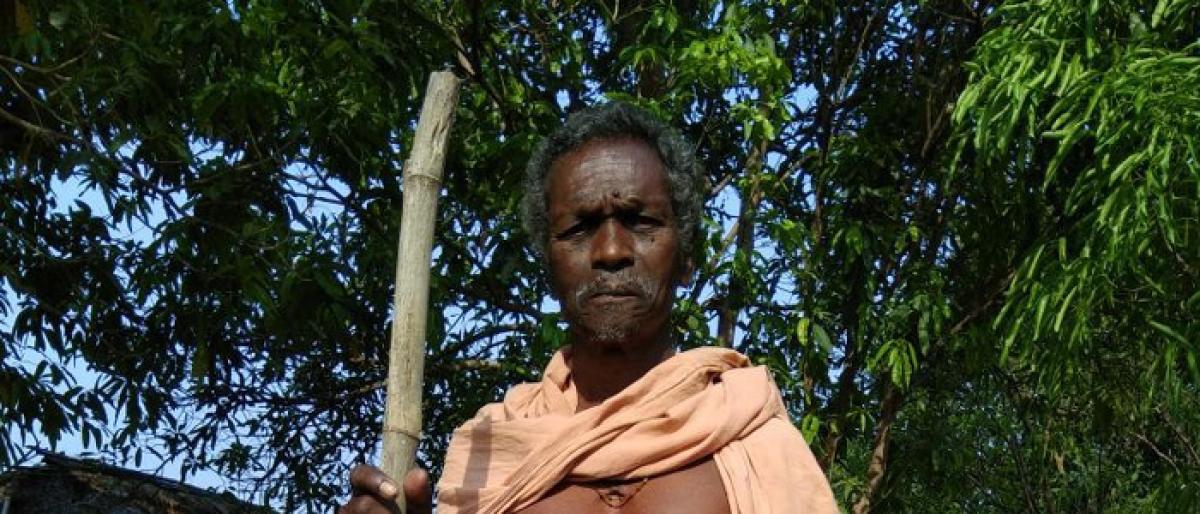Live
- A Guide to Temperature and Humidity Standards in Data Center Server Rooms
- Gadwal collector briefs on details of voters
- Jupally Krishna Rao takes part in Alampur rallu
- Bharath Prasad files 3rd Nomination
- Baisakh Month: A Time of Auspicious Beginnings and Sacred Festivals
- Oust BJD govt for overall development, says Shah
- Unveiling the Hidden Gems: Surprising Health Benefits of Garlic Peels
- Overcoming Sleep Struggles: A Comprehensive Guide to a Restful Night
- RTC bus hit the auto
- MLA Kuchukula Rajesh Reddy participated in the Birappa festival
Just In

“Language helps preserve the intellectual richness of the world. It is the most important symbol of a community’s identity. If a language dies a community’s identity is lost. It also adversely affects awareness of the environment among the speakers of the language and I fully endorse the view of UNESCO
“Language helps preserve the intellectual richness of the world. It is the most important symbol of a community’s identity. If a language dies a community’s identity is lost. It also adversely affects awareness of the environment among the speakers of the language and I fully endorse the view of UNESCO that bio-diversity will survive only if there is linguistic diversity,” says Prof. Panchanan Mohanty, President of the Linguistic Society of India and Coordinator for Centre for Endangered Languages and Mother Tongue studies at the University of Hyderabad.
On a visit to Lucknow University a couple of years ago where he had gone to deliver a “key note” address, he had asked a few students from different faculties who were interested in landscaping whether they knew the names of the trees that would be cut down. Many of them had replied in the negative. This was a situation common to people in most parts of the country the professor states to point out the vital link between language and the preservation of flora and fauna. Only when we know the name and characteristics of a species, do we realise its importance he reasons.
Prof. Mohanty who along with his team discovered two new languages Walmiki and Malhar as part of his research in the state of Orissa plans to write monographs with details of his findings on these languages. While Walmiki is spoken in Orissa’s Koraput district, Malhar is in use in a remote village some 165 kms from Bhubaneshwar.
At the 20th annual conference of the “Foundation for Endangered Languages” held in the United Kingdom, he presented a paper on the Walmiki language which has not yet been classified as belonging to any particular language group. “The Walmiki Language is not to be confused with the Walmiki Community that lives in the border areas of Andhra Pradesh.
The language spoken by the Walmiki Community is called “Kupiya’’, which is different from the language we discovered,” Prof. Mohanty clarifies. The Walmiki language has certain typical characteristics of Marathi, Telugu and Odiya gleaned from the use of suffixes which are language markers and certain common terms of vocabulary. The language spoken by a small community of around 1200 people will be studied in further detail to determine its place in the various families broadly classified as per linguistics.
Malhar falls under the subgroup of “North Dravidian” languages of the “Dravidian group”, and is spoken by a very small number of around 75 people who belong to an interior village and are mostly daily wage earners. North Dravidian languages are spoken in various states in the country that include Madhya Pradesh, Orissa, Maharashtra, Bihar and Jharkhand says Prof. Mohanty dispelling the myth that Dravidian languages are homogenous and confined to the southern states of India. Languages can be so widespread as to have variants in faraway places as in the case of the “Brahul” language of the North Dravidian family that is spoken in countries like Pakistan and Nepal.
A firm believer in the fact that learning one’s mother tongue helps learn other languages better Prof. Mohanty says it is unfortunate that in today’s materialistic world youth are indifferent to gaining proficiency in languages. He puts this down to the fact that grammar that is all important to learn a language is not taught in an interesting manner especially in one’s mother tongue. When grammar becomes difficult to grasp, students lose all interest in the language.
When it comes to the English language the problem is quite evident from the stage of nursery rhymes itself says, Prof. Mohanty. “Take the example of a nursery rhyme like “Jack and Jill went up the hill”. Who uses the word “pail” to mean a container or the “crown” in “Jack fell down and broke his ‘crown’”, where the word “crown” is used not as an adornment but in reference to the head?” he asks.
A language should be dynamic and reflect the history, culture, values and thought process of a civilisation. The professor who endeavours to spread the good word about languages feels that many beautiful things in this world would lose their power and meaning without languages which are all important vehicles of thought and communication.

© 2024 Hyderabad Media House Limited/The Hans India. All rights reserved. Powered by hocalwire.com







